Where the Home Is
Jane Zusters’ Earthquake Photographs
JENNY HARPER
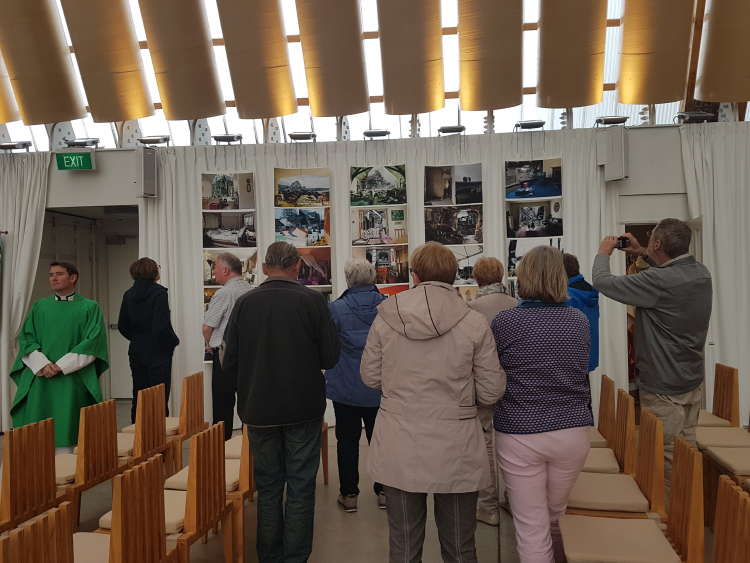
Visitors to Christchurch’s transitional cathedral view Jane Zusters’ earthquake images, February 2019 (Photograph: Jane Zusters)
Jane Zusters’ images of Christchurch, after the earthquakes of 2010–11 that changed this part of the world forever, are formidable and surreal. And she was certainly in the midst of it. Flung to the ground in the inner city on 22 February, she managed―after quickly recovering batteries scattered from her fallen camera―to take several photographs in Manchester Street directly after the major shake. Her instinctual response was matched by individual strength; but, as she muses now, ‘How often do you get subject matter like this?’
A remarkable series of photomontages has emerged from images taken that day and in those which followed. Relatively ordered sitting rooms and bedrooms of her friends, including many artists, have been matched with the destruction and dismay which was outside for some ― but in for many. Indoors and out, they are at once confusing and convincing, strange and familiar, weird and wondrous. They are remarkable and haunting.
The familiar ‘Home is where the heart is’ never seems so true as during and after disasters. People would ask each other, ‘How’s your home?’; fast becoming a metaphor for asking how you were, the personal query rarely followed the less direct and briefer one. In the following months, Zusters paired images of liquefaction (a term most had not heard nor used before), destroyed buildings, squashed cars, rocks tumbling through roofs with radically different interiors. Some interiors indicate a contrasting peace; others from areas in the ‘red zone’ are as chaotic as it was outdoors. It’s often hard to tell which is which.
In insurance terms, earthquakes and other natural disasters are ‘acts of God’; and, in terms of insurance, Christchurch was a first-world problem. A distinctive Tony Fomison portrait of Christ crowned with thorns in one rather colourful Redcliffs bedroom contrasts to a seated Buddha and a painting which imagines another kind of divinity in Worcester Street. But both are paired with crumbling inner-city buildings. Traffic lights weren’t operational as confused individuals did their best to respond. Especially poignant are the photograph of the crumbling Catholic Basilica matched with bookshelves in a Geraldine Street study (notice the copy of The Age of the Renaissance); and the damaged Worcester Street Chambers’ frontage (with a study for Doris Lusk’s Pump Station, Tuam Street mirroring part of it on the wall of a home in Alexandra Street, Richmond).
A selection of Zusters’ images is presently on display in Christchurch’s transitional cathedral where they are attracting the attention of tourists getting a better feel for the impact and spread of changes to the fabric of the city at this time. They must seem as surprising and surreal as Hannah Höch’s collages did in her day.
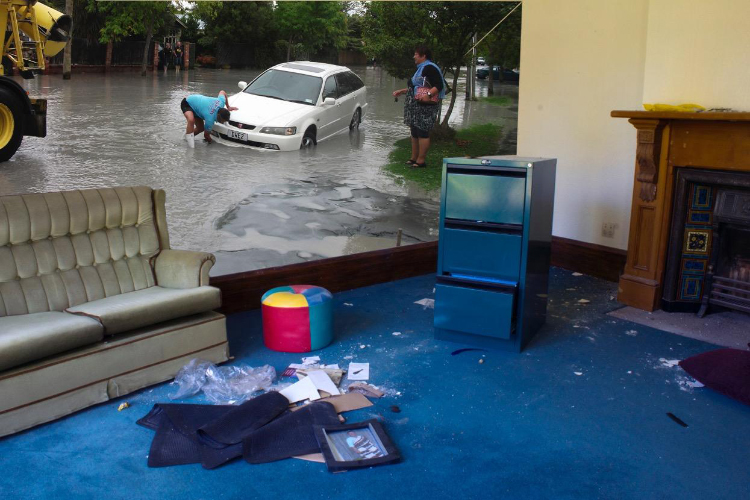
JANE ZUSTERS Liquefaction February 22, Retreat Road in red-zoned home, River Road 2011 Photomontage
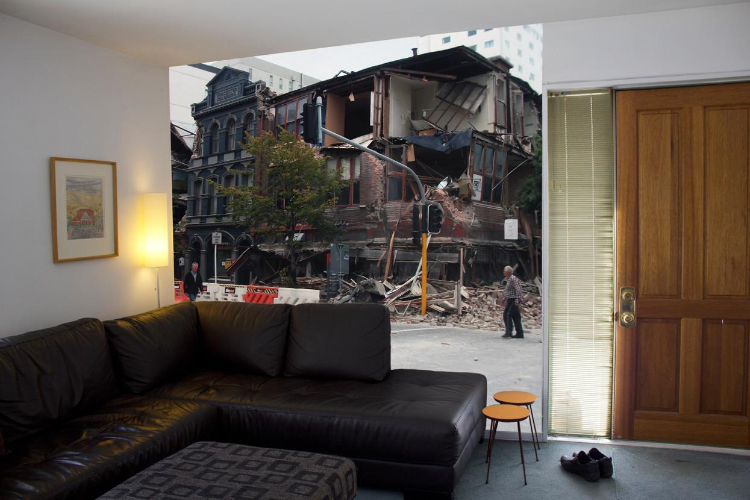
JANE ZUSTERS Worcester Street February 22, at home Alexandra Street, Richmond 2011 Photomontage

JANE ZUSTERS Demolition Victoria Street, at home Aratoro Place, Redcliffs 2011 Photomontage
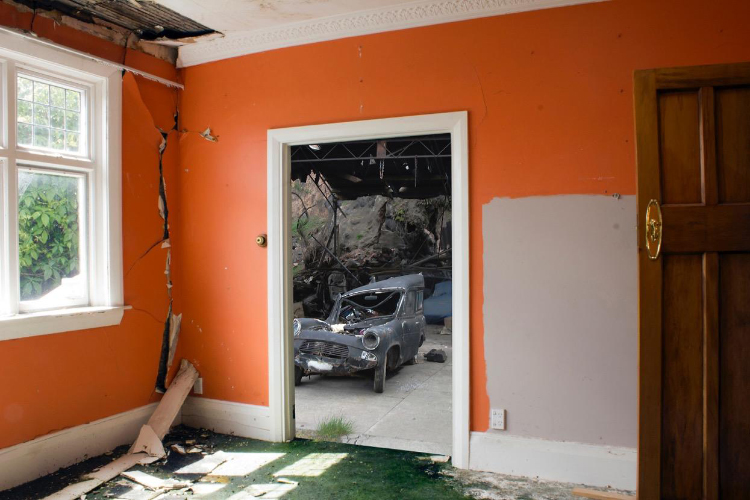
JANE ZUSTERS Car Wakefield Avenue, Sumner, in ruined home Worcester Street 2011 Photomontage

JANE ZUSTERS Trinity Church Manchester Street, February 22 at home Worcester Street 2011 Photomontage
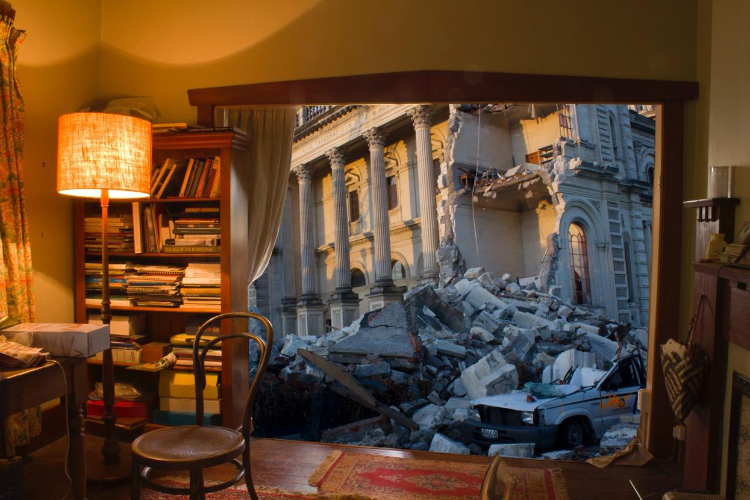
JANE ZUSTERS Cathedral on Barbadoes Street, at home Geraldine Street, St Albans 2011 Photomontage
